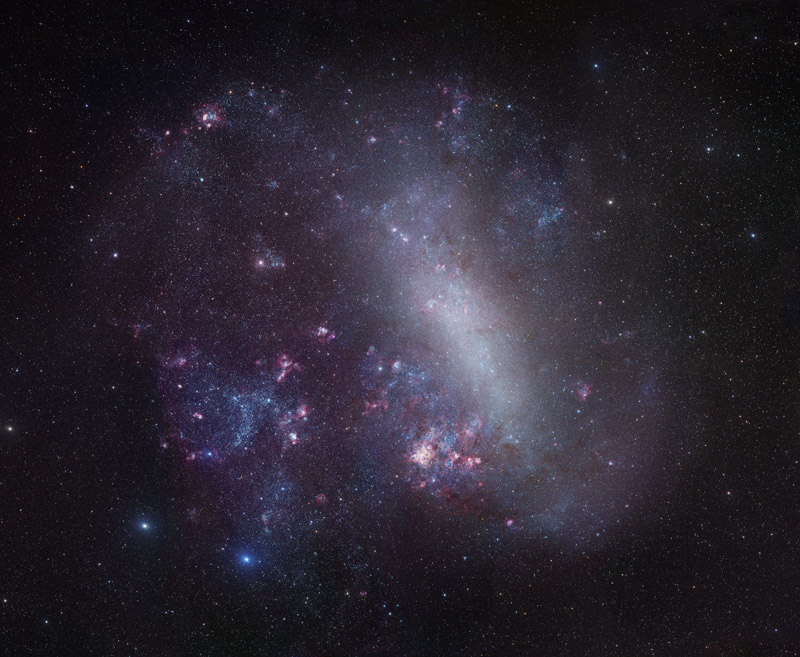Credit & Copyright: Robert Gendler
Explanation:
The 16th century Portuguese navigator
Ferdinand
Magellan and his crew had plenty of time to study the
southern sky during the first circumnavigation of planet Earth.
As a result, two fuzzy cloud-like
objects easily visible to southern hemisphere skygazers are known as the
Clouds of Magellan,
now understood to be
satellite galaxies of our much larger, spiral Milky Way galaxy.
About 160,000 light-years distant in the constellation
Dorado,
the Large
Magellanic Cloud (LMC) is seen here in a remarkably detailed,
10
frame mosaic image.
Spanning about 30,000 light-years or so, it is
the most massive of the Milky Way's
satellite
galaxies and is the site of the
closest
supernova in modern times, SN 1987a.
The prominent reddish knot near the bottom is 30 Doradus, or the
Tarantula Nebula, a giant star-forming
region in the Large Magellanic Cloud.
To identify the location of the supernova and navigate your way
around the many star clusters and nebulae of the LMC, just consult this
well-labeled view.
1999 2000 2001 2002 2003 2004 2005 2006 2007 2008 2009 2010 2011 2012 2013 2014 2015 2016 2017 2018 2019 2020 2021 2022 2023 2024 2025 |
Январь Февраль Март Апрель Май Июнь Июль Август Сентябрь Октябрь Ноябрь Декабрь |
NASA Web Site Statements, Warnings, and Disclaimers
NASA Official: Jay Norris. Specific rights apply.
A service of: LHEA at NASA / GSFC
& Michigan Tech. U.
|
Публикации с ключевыми словами:
LMC - БМО - Большое Магелланово Облако
Публикации со словами: LMC - БМО - Большое Магелланово Облако | |
См. также:
Все публикации на ту же тему >> | |
